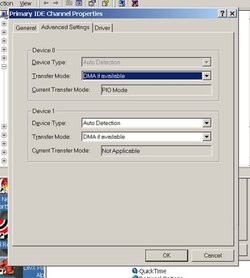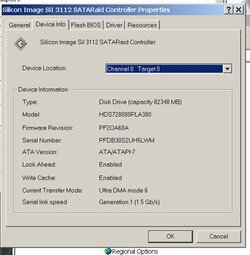- Joined
- Dec 25, 2004
I just got a Chaintech motherboard and a SATA drive to take advantage of the fact that this is the first motherboard I've had that could use SATA. Everything seemed to go ok, except that Win2K pro is saying the SATA is stuck in PIO (It does say to use DMA if available). I 'm tearing my hair out here, but I can't find anything that will let me turn DMA on. I've checked the drive with Hitachi's Feature Tool utility and it says that it is running at UDMA-6, but when W2K comes up it is back in PIO. Motherboard is an SKT600. I've read the stickies and searched the forum, but I'm still not finding an answer.
 :
: 
